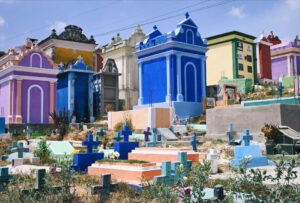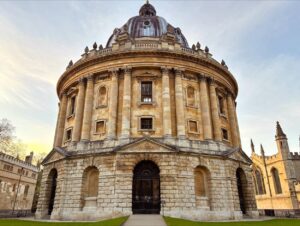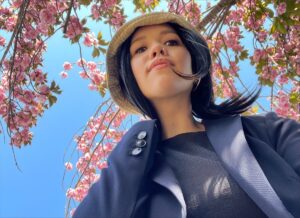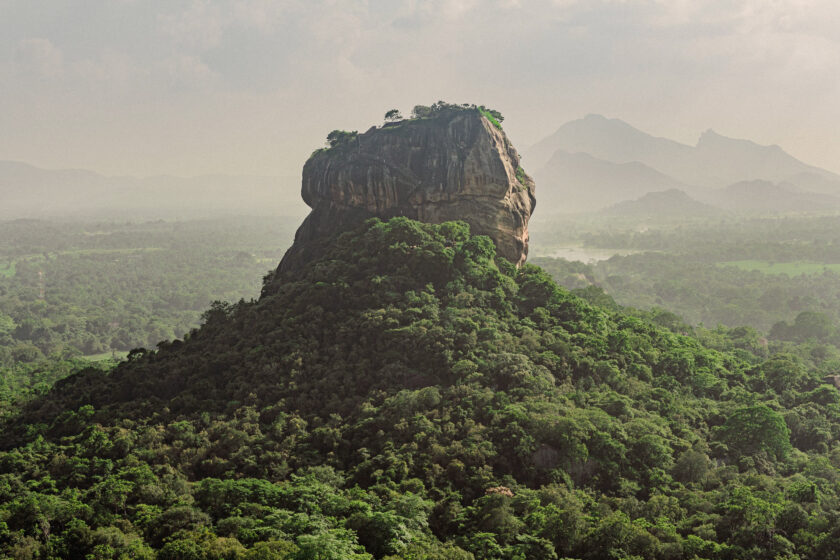
How could an ancient civilisation have flourished on the summit of a giant monolith? Sigiriya, the former capital city of Sri Lanka creates more questions than it answers. But these mysteries make it one of the country’s most fascinating places to explore.
Sigiriya derives its name from ‘Sihagri’, meaning lion, and refers to the majestic lion-shaped rock in which the city was built upon. Nowadays, only elements of the lion remain but continual archaeological work is being carried out to discover more, and understand better the engineering that went into building this site over 1500 years ago.
Made of granite, and nearly 200 meters tall, the rock itself was formed over two billion years ago when the area around Sigiriya was rife with active volcanoes.
This famed rock is not just a spectacle to see from afar, visitors have the opportunity to climb its summit and experience breath-taking 360-degree panoramas across the lush, jungle landscape.
Inscribed onto the UNESCO World Heritage List in 1981, and often dubbed the 8th Wonder of the World, Sigiriya is a place of great archaeological, geological and historical importance.
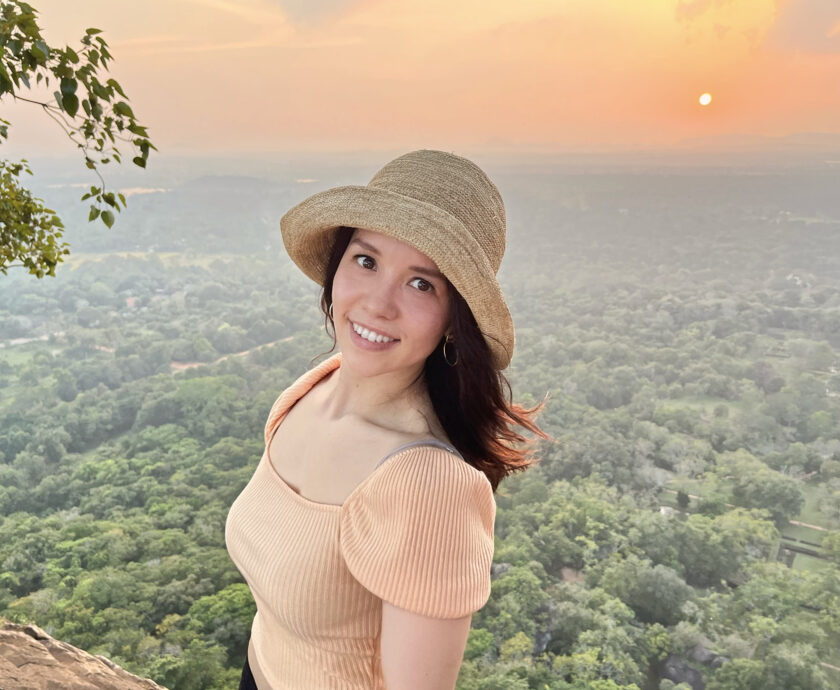
The turbulent history of Sigiriya
The story begins in the second half of the 5th century in the ancient capital of Anuradhapura which is approximately 70 km north-west of Sigiriya. The King at the time was Dhatusena and he had two sons, Kashyapa and Moggallana. Kashyapa was the eldest son of the King, but he was overlooked as heir to the throne because he was born from the King’s relationship with a concubine of non-royal blood. In contrast, his younger brother, Moggallana, was born to Dhatusena’s royal consort, and was considered the next in throne.
As you might expect, Kasyapa grew up to resent this decision and under the influence of Migara, who was King Dhatusena’s nephew, they hatched a plan to kill the King. Migara had his own reason for wanting the King dead. He was seeking revenge after the King ordered for his mother (the King’s own sister) to be killed.
With Migara’s assistance and encouragement, Kasyapa staged a coup and overthrew his father, seizing the throne and causing his younger brother, Moggallana to flee for his life.
King Datusena was then imprisoned for a period of time, before Kasyapa gave instructions for him to buried alive inside the walls of his prison cell. Yikes!
Prior to the killing, Migara had also led Kasyapa to believe that the king had hidden treasures of great wealth which they could collect after his death. When Kasyapa asked Migara to find the treasure, he was unable to produce anything. Kasyapa realised that he was probably duped by Migara so he (surprise, surprise) had him killed too.
The people of Anuradhapura were enraged by the killing of their King and did not accept Kasyapa as their new leader. Weary of retaliation, Kasyapa fled up the large rock and sought refuge. It was then that the kingdom of Sigiriya was born.
Inspired by the mythological Buddhist city of Alakamanda, which was said to be a beautiful city of gods built in the clouds, Kasyapa set about creating his new city and palace at Sigiriya. While the Buddhist faith encouraged monarchs to avoid self-indulgence, Kasyapa had been rejected by his people and felt no need to be bound by these rules. He chose instead to use his wealth to design an extravagant kingdom for himself, complete with beautiful gardens, pools, and fountains. The most iconic feature, however, was a massive lion-shaped gateway at the entrance, which has since eroded, leaving only the lion’s paws.
For 18 years Kasypara ruled the rock fortress, and in contrast to his earlier bloodied actions, it was said to be a peaceful rule. The death of his father rested heavy on his conscience and he attempted to repent within the confines of his faith.
However, his past eventually caught up with him when his brother Mugalllana arrived with an army to fight for the throne. The story goes that Kasyapa slit his own throat in the battle which ended his reign and life, enabling Mugallana to rightfully take the throne. Some people say that he then destroyed most of the rock fortress, but other sources say the destruction points towards Muslim invaders.
Perhaps, we’ll never know the full truth, but anyone standing atop the summit, overlooking the palace ruins, will surely get a sense of the drama that once unfolded here.
Inside the garden complex
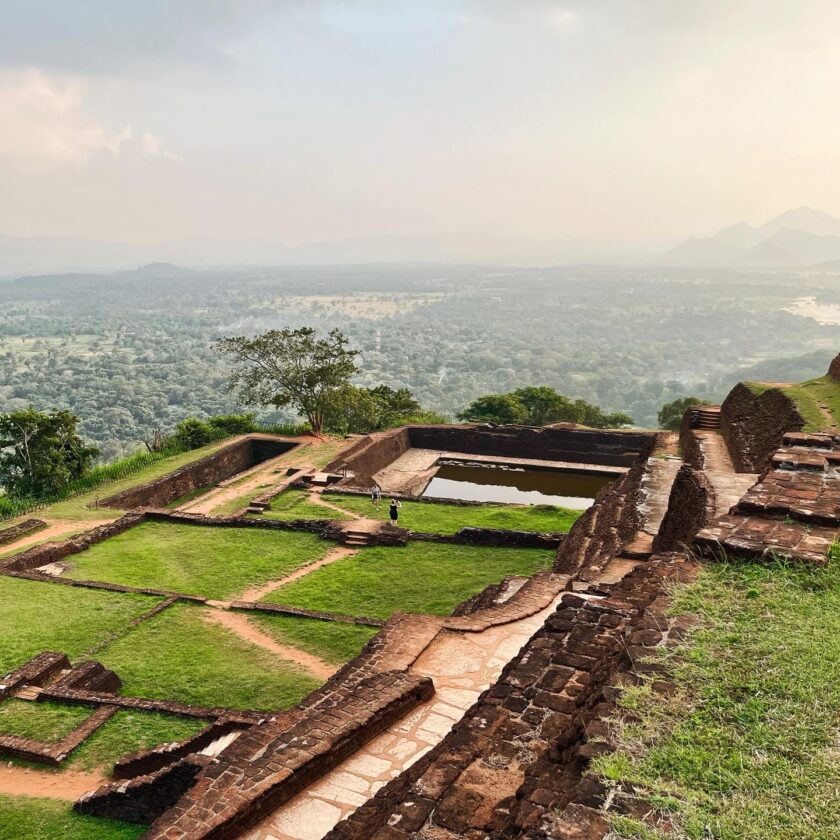
To enter, it costs $30 per person. Not exactly cheap but it’s worth it. If you’re arriving from the UK, I’d advise you to take some US dollars with you (also optional to pay in rupees).
The Sigiriya Museum
I think some people skip the museum because the sunny weather feels almost too good to stay inside, but it’s included in the ticket price and definitely worth a visit to gain some background knowledge.
There are some interesting artefacts including stone sculptures, bowls and decorative objects to appreciate the advanced craftsmanship that was prevailing thousands of years ago. The displays explain all the ancient trading routes with the other parts of the world. And you will also be able to see photos of early excavations done by British archeologists in the late 19th century.
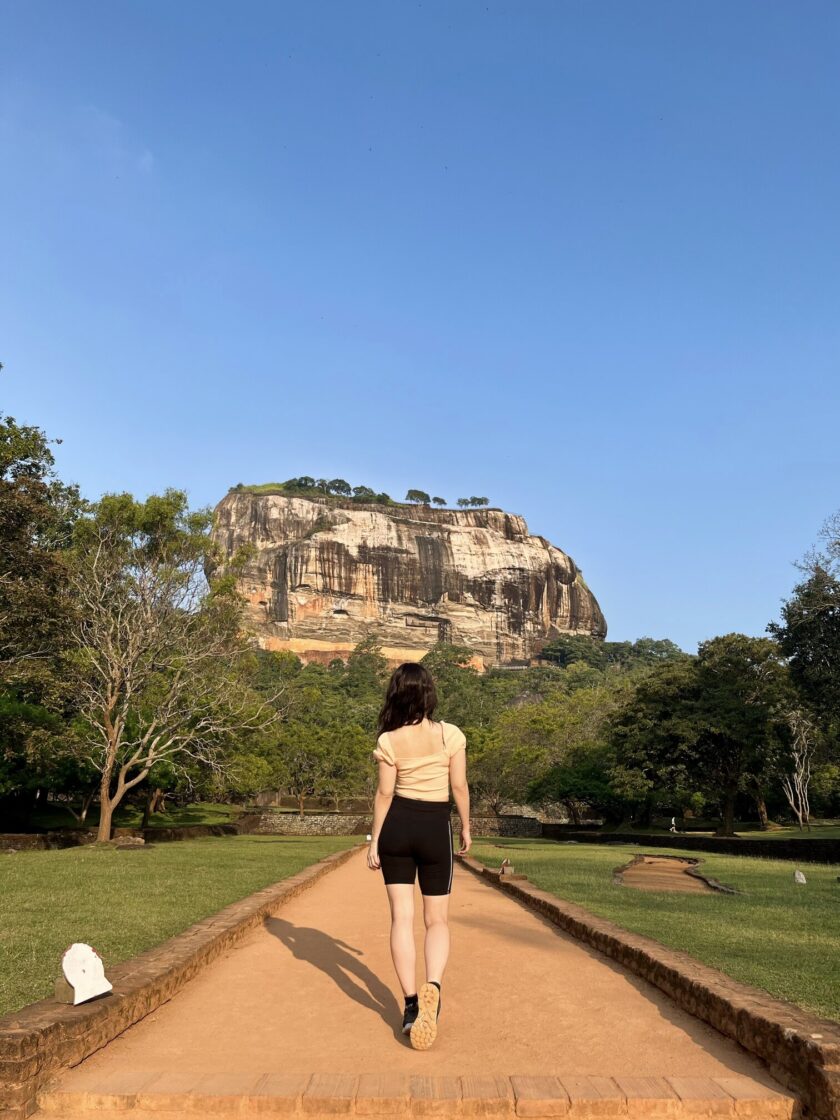
The Royal Gardens
I wanted to be at the summit for sunset and also wait until the hottest part of the afternoon had retreated in favour for golden hour. I therefore entered the gardens at around 4:30pm and I’d recommend going at this time too.
As I passed through the garden I stopped to enjoy a parade of monkeys. There are more monkeys than visitors. I couldn’t help but laugh at their haircuts, all of whom looked like Donald Trump. But unlike Trump, I found them super cute.
I contemplated the history of this epic site as I walked the long avenue through the royal gardens. The beautiful water gardens, which also served as moats, are recognised as one of the oldest landscape gardens in the world.
The Boulder Garden
At the end of the avenue, the geometric symmetry gives way to a boulder garden and a natural rock arch that begins the climb up Sigiriya Rock (1200 steps to be exact).
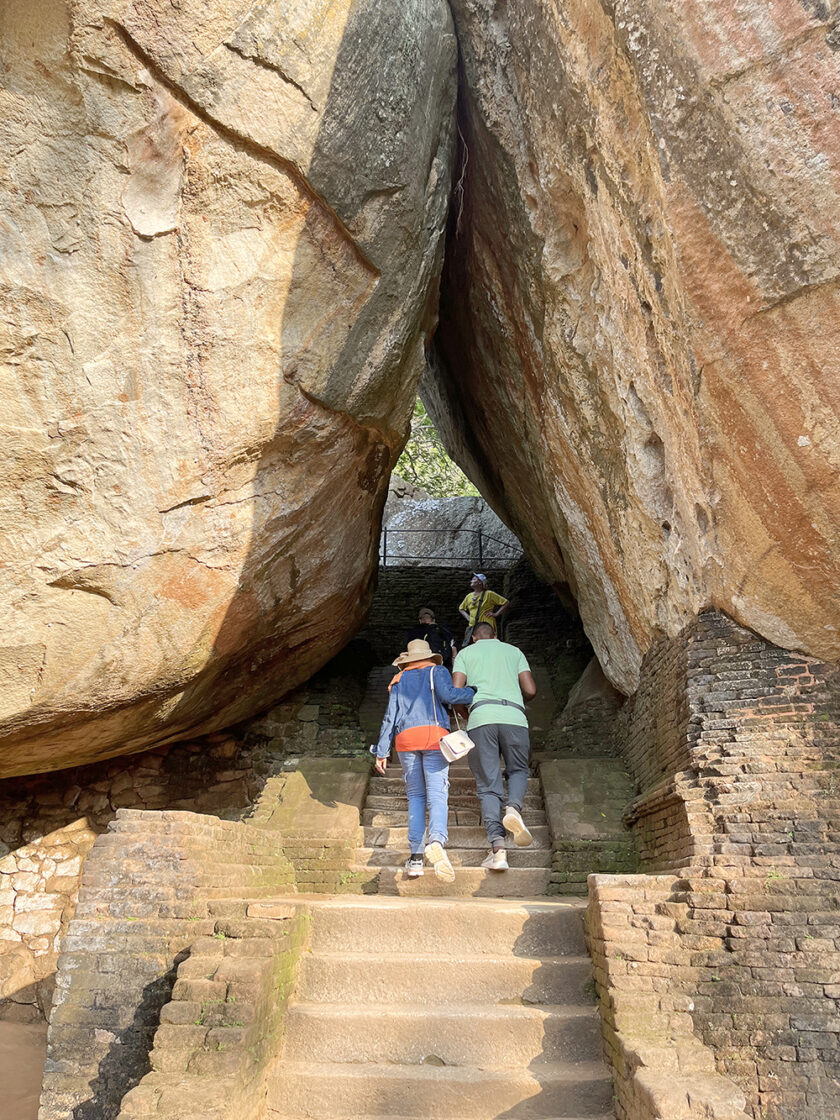
The Mirror Wall and Frescoes
I descended up a metal staircase taking me up the first portion of the sheer wall. It’s not technically difficult or anything to climb, the only thing that makes it somewhat challenging is the heat. Beads of sweat were dripping off my forehead and sweat patches were beginning to form on my clothes in a very glamorous manner I must say.
The mirror wall is a huge wall originally coated with a smooth glaze and polished to a mirror-like sheen. Legend has it that King Kasyapa greatly admired his own reflection in this wall. Scholars now study the graffiti that visitors engraved on the wall between the 6th and 13th centuries. Apparently, many of the over 1000 pieces of scribbled verses are impressions of the art found in the rock gallery just above the mirror wall – 5th century paintings of very buxom women believed to be deities or the King’s concubines.
Today, you can still admire the gorgeous frescoes at Sigiriya, but photography and graffiti are forbidden in this section.
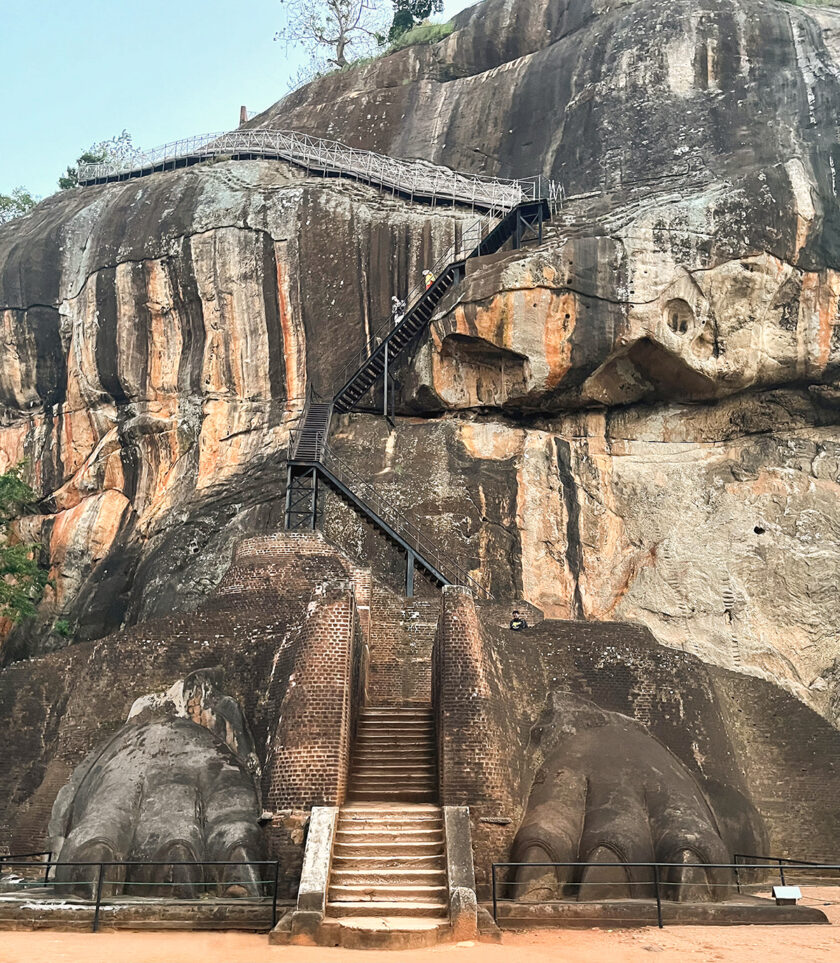
Lion Paw Staircase
Sigiriya gets its nickname ‘Lion Rock’ because of the huge lion paws that guard the staircase to the entrance of the rock. The thing that really struck me were the size of its nails – they looked more like daggers! During the 5th century, this staircase led to the enormous gaping mouth of the lion, which had a religious significance to it. However, the head of the lion had collapsed a long time ago, and the giant paws are the only parts that are left.
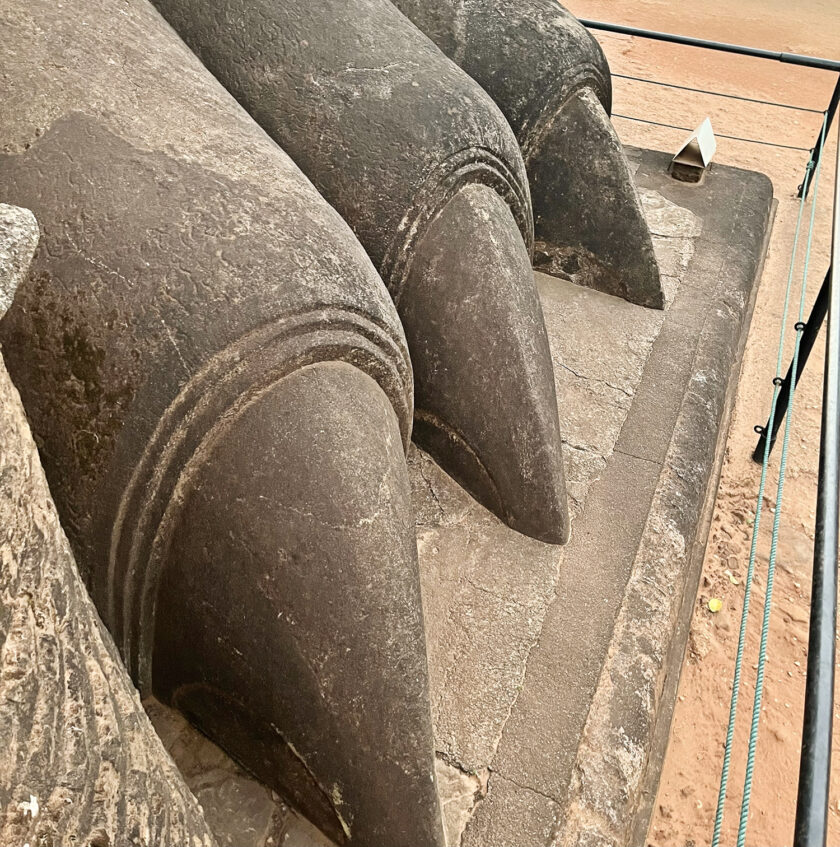
The Summit
The ruins on the summit are quite remarkable but I needed to use my imagination to conjure up what this hilltop fortress and gardens must have looked like; only the ancient cisterns and low foundations of structures remain standing.
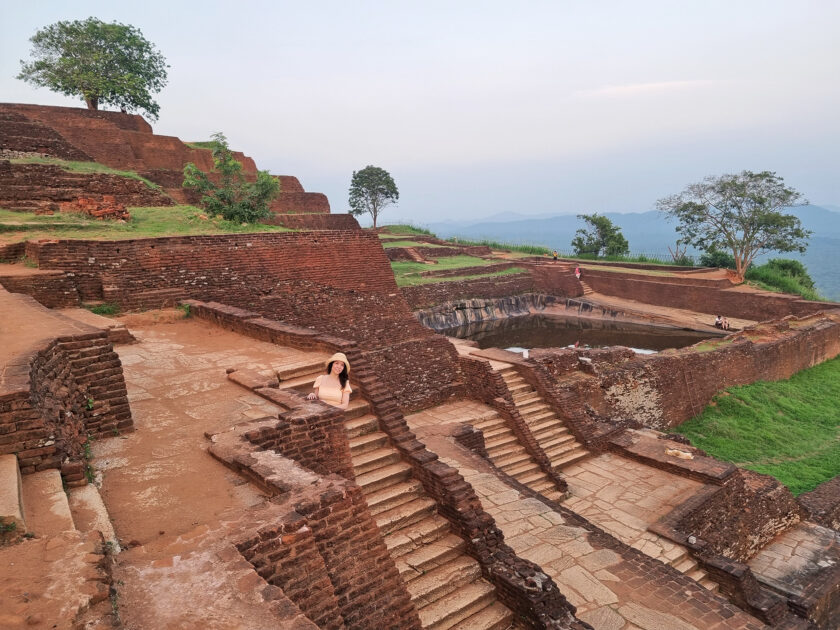
Nonetheless, it’s incredibly atmospheric especially with an ethereal mist that had gathered at the top, and the views are absolutely sublime. After a walk around the ruins, I sat down to watch the sunset, and it was made even more delightful by the monkeys’ antics who seemed just as enchanted by the sunset as I was.
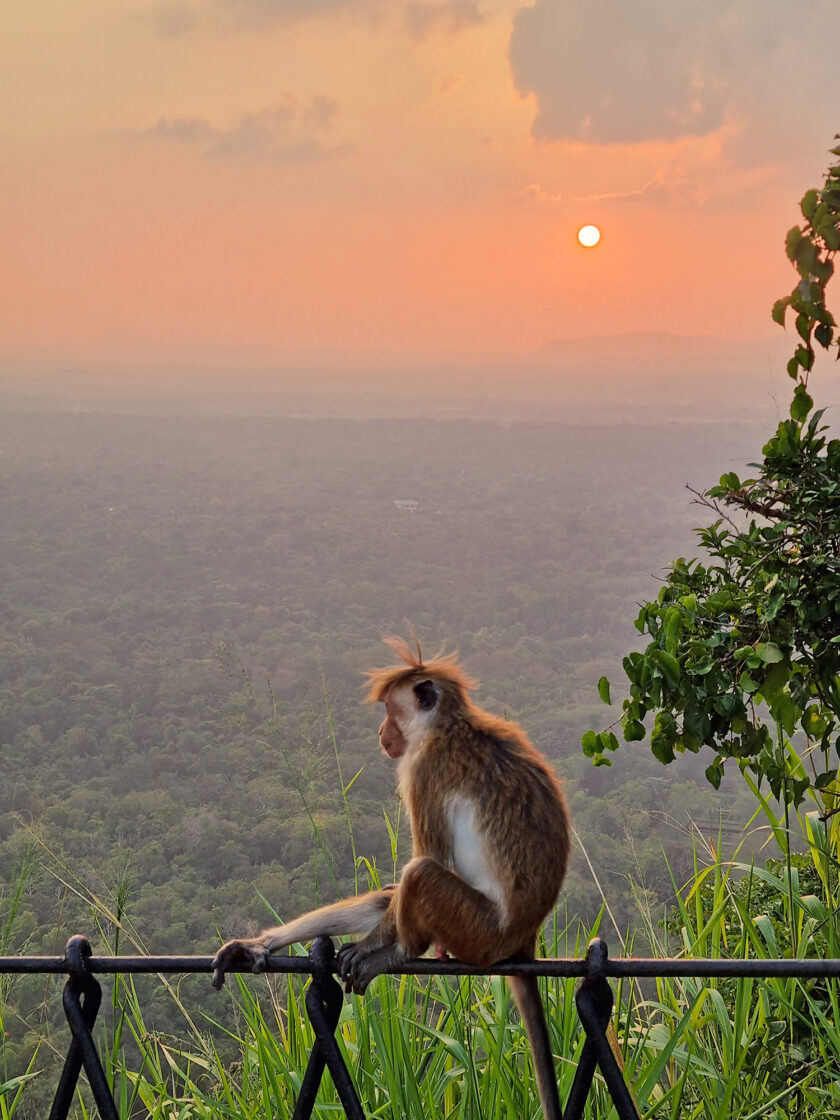
I realise now that to get a real sense of how imposing the ancient fortress must have been you need to see it from above, so I’ve included a drone image by photographer Dylan Shaw. Incredible, isn’t it?
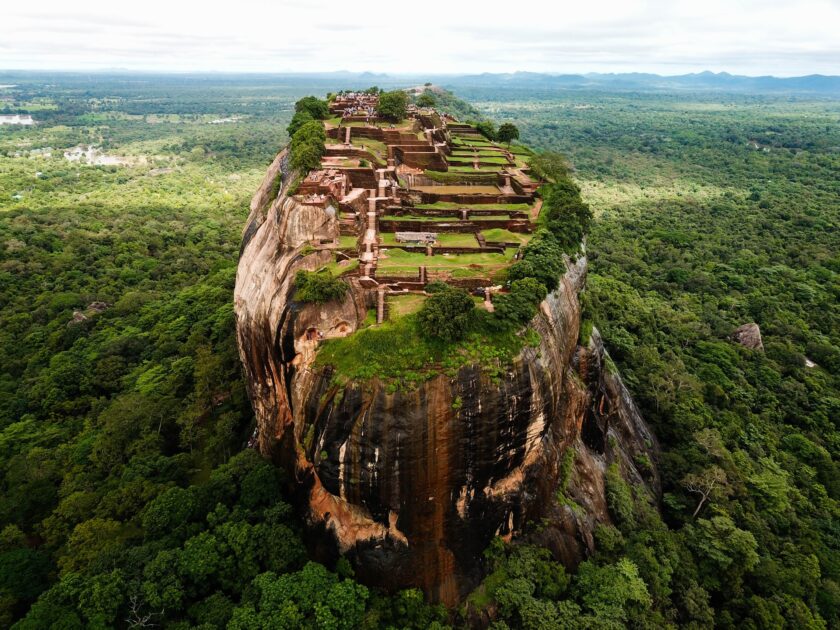
Where to stay in Sigiriya
I spent two nights in Sigiriya staying at Otunna Guest House. I couldn’t recommend this charming eco-lodge enough for its hospitality, delicious home-cooked Sri Lakan food and quiet location set within a beautiful garden. It is an easy 20-minutes’ walk from Sigiriya Rock (or alternatively, you could hop in a tuk tuk). Dinesh, the owner, made our time in Sigiriya very special. He was happy to help with any of our requests, and his personal approach and warmth has made a lasting impression.
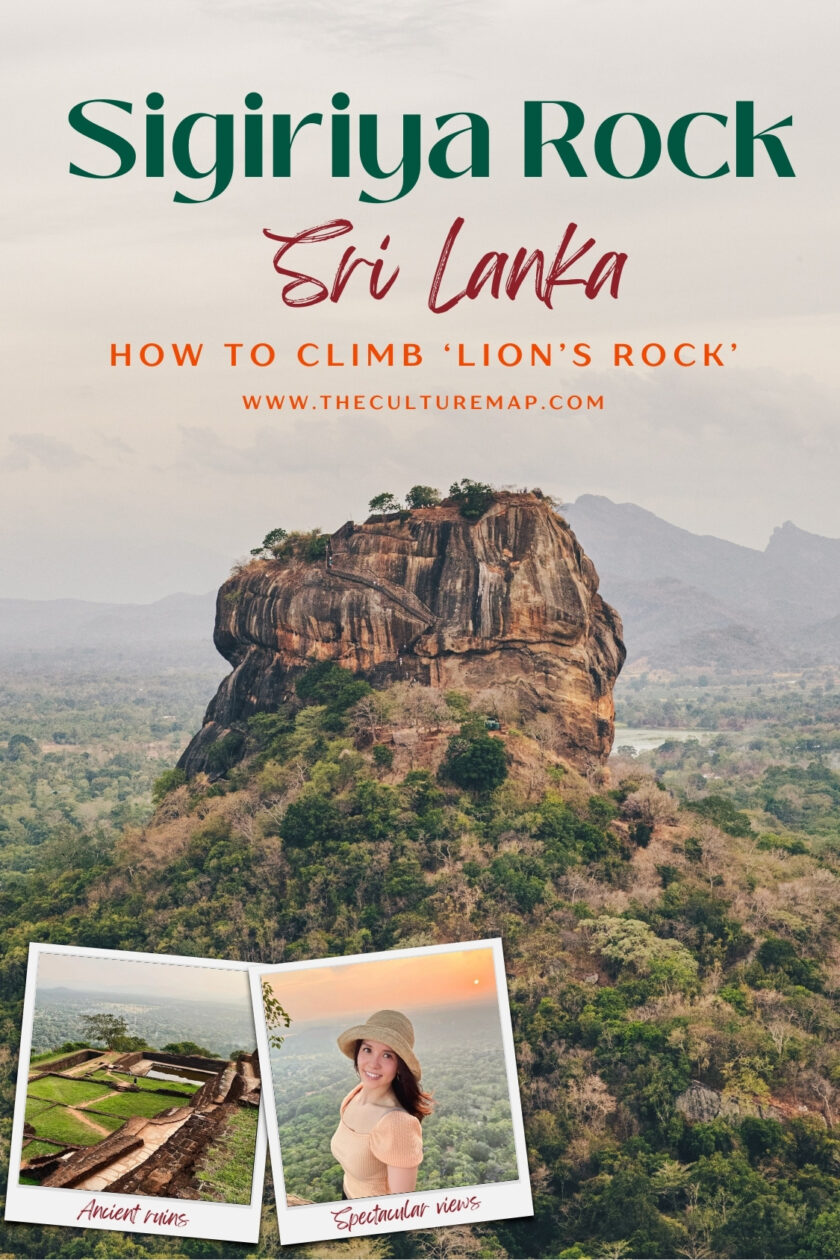
Are you planning a trip to Sri Lanka?
For more information and helpful tips, take a look at my 2-week Sri Lanka itinerary.


